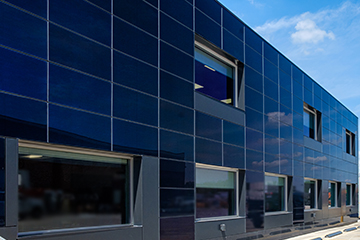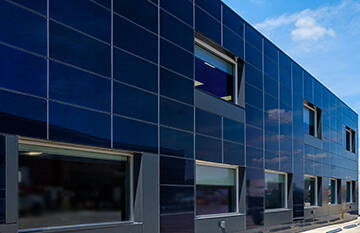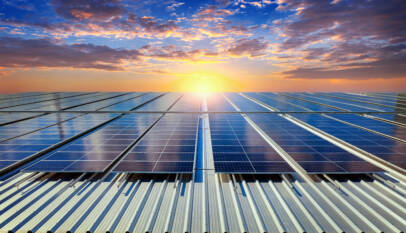Solar Panel Cladding Solutions for Enhanced Durability and Efficiency
Solar panel cladding is an innovative building material that integrates solar panels directly into a structure’s exterior. Instead of mounting traditional panels on roofs, these cladding systems serve dual purposes: protecting the building while generating clean electricity. This approach allows buildings to efficiently produce energy on-site without compromising architectural design.
These cladding systems come in various forms, such as photovoltaic panels embedded in facades, solar shingles, or solar-integrated bricks. They offer benefits beyond energy generation, including improved insulation, noise reduction, and enhanced thermal performance. Installation is typically streamlined, making it a practical choice for new constructions or retrofits.
By combining aesthetics with function, solar panel cladding is gaining traction in sustainable architecture. It addresses growing energy demands while maintaining the building’s visual appeal, creating a versatile solution in modern construction.
Understanding Solar Panel Cladding
Solar panel cladding integrates solar technology into building exteriors, combining energy generation with structural protection. It involves specialized materials and systems designed to fit various architectural needs while providing functional benefits like insulation and weather resistance.
How Solar Panel Cladding Works
Solar panel cladding incorporates photovoltaic (PV) cells into the building’s outer surface, capturing sunlight to produce electricity. These cells convert solar energy directly into electrical power, which can be used on-site or stored.
The cladding serves as both a protective layer and an energy source. It replaces traditional facade materials while generating renewable energy, reducing a building’s reliance on external power grids. Some systems include ventilation spaces behind panels to improve thermal regulation of the building.
This dual-function design requires precise installation to ensure electrical connections and weather-sealing are properly maintained for long-term performance.
Types of Solar Panel Cladding Systems
There are several forms of solar panel cladding depending on installation and design preferences:
- Building-Integrated Photovoltaics (BIPV): PV cells are embedded directly within cladding materials like glass or metals.
- Prefabricated Solar Facades: Complete panels are manufactured off-site and installed as large modules.
- Ventilated Solar Facades: Panels mounted with an air gap to improve insulation and moisture control.
- Solar Siding: PV panels integrated as siding on building walls for both aesthetic and functional purposes.
Each type offers different trade-offs between design flexibility, ease of installation, and energy output.
Key Components and Materials
Solar panel cladding systems commonly consist of:
- Photovoltaic Cells: Usually silicon-based, responsible for converting sunlight into electricity.
- Encapsulation Layers: Protect the PV cells from moisture, dust, and mechanical damage.
- Supporting Substrates: Materials like glass, metal, or composite panels that provide structural stability.
- Mounting and Fixation Systems: Hardware that attaches the cladding securely to the building’s framework.
- Electrical Components: Wiring, connectors, and inverters facilitate safe energy transfer and integration into the building’s power system.
Materials must balance durability, weather resistance, and aesthetic qualities to suit specific applications.
Benefits and Applications of Solar Panel Cladding
Solar panel cladding offers both functional and aesthetic advantages by combining energy generation with building design. It contributes to reducing energy costs while enhancing the building’s exterior. The technology suits a variety of building types and uses, addressing modern energy standards efficiently.
Energy Efficiency and Sustainability
Solar panel cladding generates electricity on-site, directly offsetting a building’s energy consumption. This reduces dependency on fossil fuels and lowers greenhouse gas emissions.
Its integration into facades minimizes land use compared to traditional solar farms. Additionally, ventilated solar cladding improves insulation, thermal regulation, and noise reduction, contributing to overall energy savings.
In some regions, solar cladding qualifies for government incentives or carbon tax reductions, speeding up financial returns. These practical benefits make it an effective solution for sustainable building design.
Architectural Integration and Aesthetics
Solar cladding systems can be designed to match various architectural styles, enhancing the building’s appearance. They are available in multiple types such as thin-film, crystalline silicon, and building-integrated photovoltaics (BIPV).
Pre-fabricated solar facades allow for quick and precise installation, maintaining design consistency. The system can replace conventional cladding materials without compromising durability or visual appeal.
By combining functionality and design, solar cladding creates facades that are both energy-producing and visually attractive, fitting seamlessly into modern architectural projects.
Residential and Commercial Use Cases
Solar cladding suits both new builds and existing structures across residential and commercial sectors. In residential buildings, it offers a way to generate renewable energy without altering roof space.
Commercial buildings benefit from reduced operational costs and improved sustainability ratings. The modular nature allows customization for offices, retail spaces, and industrial facilities.
Its application ranges from small-scale homes to large complexes, providing flexibility and scalability. Integration through certified partners ensures proper installation and system optimization for each building.
Best Bathroom Renovation Company Near Me for Reliable and Quality Remodels
Finding the best bathroom renovation company near me starts with looking for licensed, exp…










